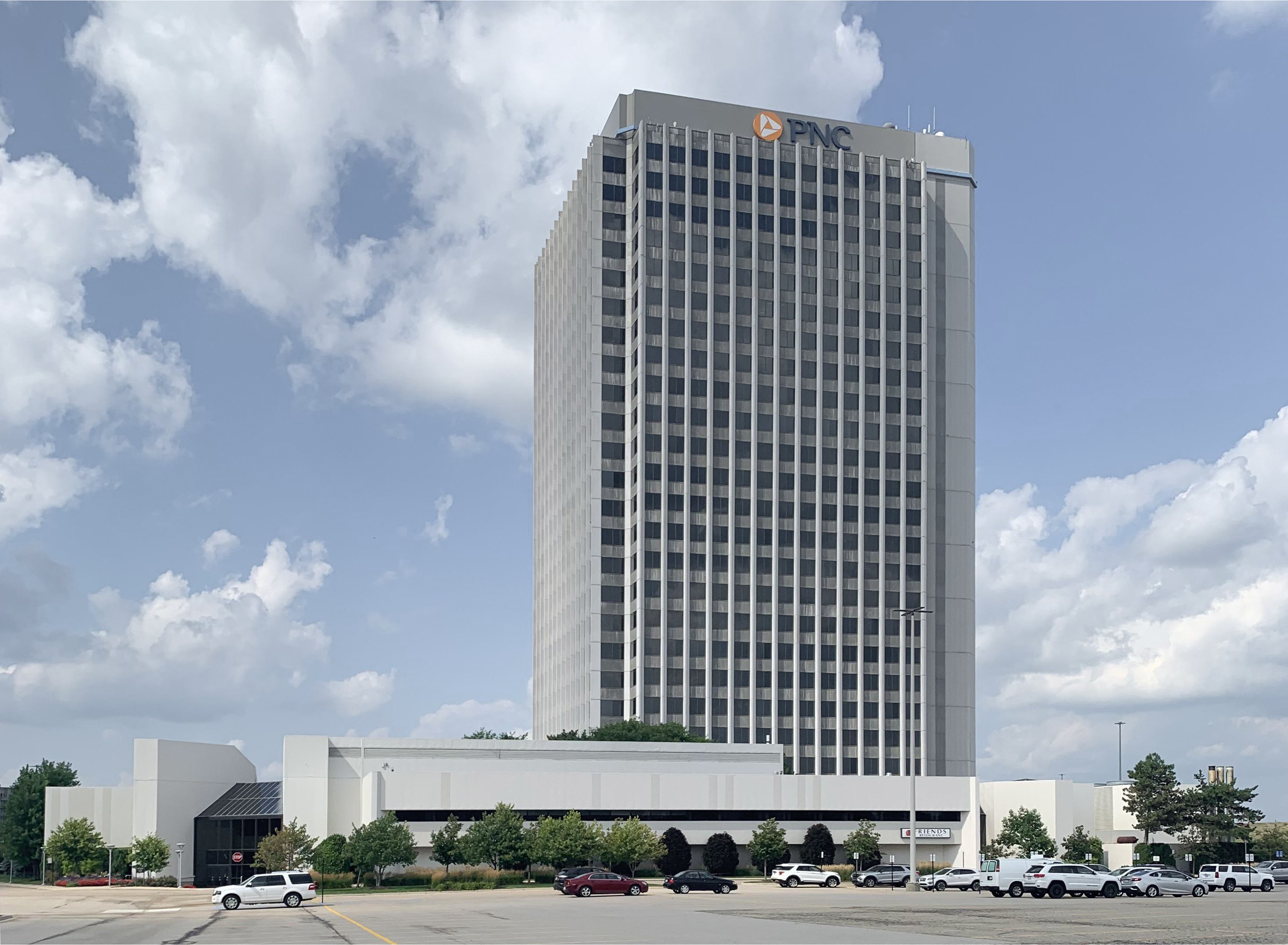The PNC Center is an International Style skyscraper designed by Rossetti Associates, and built between 1974 and 1975 in Troy, MI.
PNC Center is not the only name you might know this building by though. It is common for companies to want to attach their names to iconic buildings when they move in, or for the general public to come up with nicknames, and this one is no exception. The PNC Center is also known, or has been known as, National City Center, or Top of Troy.
Its precise street address is 755 West Big Beaver Road, Troy, MI. You can also find it on the map here.
The complex consists of a 25-story triangular office tower and a two-story atrium containing offices, retail, and a conference center. Even to this day it is still the tallest building in Troy.
